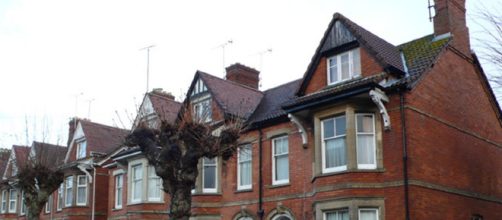Many people across the UK believe that Building more houses does not provide a solution. On almost every space that was available, whether green belt or brown belt, there are now houses being built in an attempt to solve the housing crisis in the UK.
Why building houses is not the answer
At the 20th UK Conservative Party Conference David Cameron announced the beginning of a "national crusade to get houses built." That meant banks lending, government releasing land, and yes, "planning being reformed." The Prime Minister's call to arms reflects the view that the current housing crisis results from a failure to build enough new houses, causing a restricted supply and the inflated House Prices we have seen over the years.
The increase of the supply of houses, according to the theory, means houses will inevitably become more affordable, so they are just building and building.
Walking through my own home town today I noticed that areas which were previously grass areas or play areas, are not being taken over and used as houses. Does that mean in the next five to 10 years, areas which were appreciated and used by locals in the summer periods will no longer be there? Many of the other areas which were empty have been converted into University accommodation and so on.
On the other hand, if more houses are being built, more people are likely to move into the area. If they have children, they are going to need to go to school.
There are not that many schools in the area, so the more houses they build, means the schools may end up getting strained with their resources. This may result in lower education quality as teachers will have much larger classes and fail to give each student the attention to detail that they deserve.
An issue at large is not the amount of housing relative to the number of households but their the distribution.
Some people are "house rich" with much more space than they require, while others struggle to find a home they can afford with their budget. The English Housing Survey for 2013-14 showed that half of all owner-occupiers were under-occupying their home - seen as having two or more rooms above the bedroom standard. In comparison, only 15 percent of private rents and 10 percent of social renters were under occupying.
The same survey showed that three percent of all homes are overcrowded: One percent of owner occupied homes, five percent of privately rented and six percent of social renting.
Will the budget fix the current problems?
A few weeks ago, Chancellor Philip Hammond delivered the budget and touched on the housing market. It was particularly aimed at gaining the confidence of young voters who the Tories lost to Labour in the last general election earlier this year.
Young people such as Sophie Tyrrell, who is the Conservative candidate for Penylan expressed, "The Government needs to provide enough money to ensure that affordable housing can be built. We're having a generation that are living with parents until their 30's in some cases due to high rental prices.
Those in the rental market are struggling to get on the property ladder because houses are simply too expensive."
On the day of the budget, Hammond claimed that the changes he announced in the budget were making home ownership a "reality, not a dream" for them. Whether that is a reality, we will have to wait and see.
Building new homes does not automatically mean homes for those who need them. As there is currently inequality in wealth, the market is more likely to furnish second homes for some of the UK residents, and investment opportunities for wealthy foreigners who are looking for a safe haven for their money, than to provide homes for people in need.
On the other hand, there is a danger of overshooting by building too many houses as I have pointed out.
The recent history of low demand areas such as the north west of England, and the spectre of abandoned newly built homes in Ireland and Spain after the economic crash of 2008, should be an indication of the problems that could occur. House prices in Ireland started to fall before the banking crisis and it is likely that those falls contributed to the crisis in Ireland. By 2010 the price of residential property in Dublin had fallen by more than 56 percent and there were huge numbers of unsold property.
There are many different ways in which the crisis of housing affordability and its underlying causes can be tackled without taking on a risky and unsustainable house building bonanza.
Reliance on the market has manifestly failed to provide homes that ordinary people can afford. We will have to wait and see over the next few years whether the changes made by our government will bring hope to those who are trying to get on the housing ladder.


